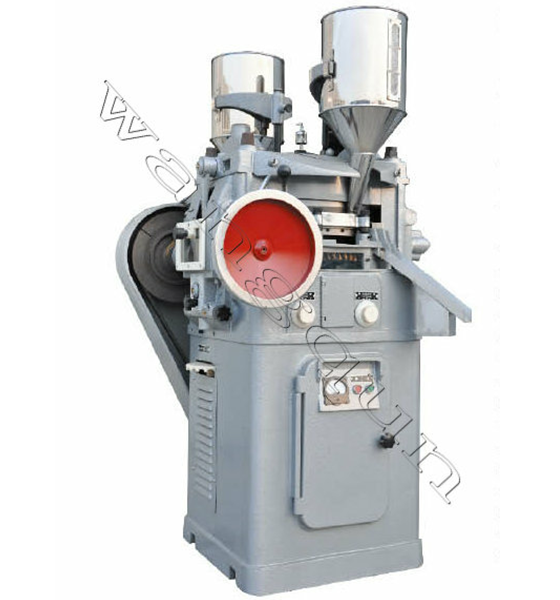How to Troubleshoot a Disinfection tablet press Effectively
The disinfection tablet press is a key machine used in pharmaceutical, chemical, and healthcare industries to produce high-quality disinfectant tablets. Despite advanced design, even modern presses can experience operational issues such as uneven tablet weight, sticking, or low output. Proper troubleshooting is essential to maintain consistent tablet quality, minimize downtime, and extend equipment lifespan. This guide provides a step-by-step approach covering installation, maintenance, inspection, and customer feedback for effective troubleshooting.
Table of Contents
Introduction
Installation Steps for Optimal Operation
Maintenance and Care of Disinfection Tablet Press
Inspection and Troubleshooting Guidelines
Common Operational Issues and Solutions
Customer Feedback and Case Studies
Conclusion
1. Introduction
A disinfection tablet press compresses powdered materials into tablets used for surface sanitization, water purification, and disinfectant formulations. Despite high reliability, several factors can affect performance, including:
Efficient troubleshooting ensures:
Consistent tablet weight and hardness
Reduced downtime and operational costs
Compliance with GMP and other quality standards
Energy-efficient operation

2. Installation Steps for Optimal Operation
Proper installation is the first step in minimizing operational problems. The following steps ensure that the press functions effectively:
2.1 Pre-Installation Requirements
Level foundation: Ensure the floor is stable and leveled to reduce vibration
Power supply: Verify voltage and frequency match machine specifications
Clean environment: Avoid dust and moisture that may affect electronics
2.2 Step-by-Step Installation
| Step | Description | Notes |
|---|
| 1 | Place machine on leveled foundation | Use leveling tools to prevent vibration |
| 2 | Connect electrical supply | Ensure grounding and correct voltage |
| 3 | Install turret, punches, and dies | Align punches with dies precisely |
| 4 | Connect hopper and feeder system | Verify powder flow |
| 5 | Test control panel | Check PLC and emergency stop functions |
| 6 | Perform trial run | Adjust speed, compression force, and feed rate |
2.3 Initial Testing
Before full-scale production:
Verify tablet weight, hardness, and thickness
Ensure hopper flow is uniform
Check lubrication system and safety interlocks
3. Maintenance and Care of Disinfection Tablet Press
Regular maintenance is key to preventing frequent breakdowns.
3.1 Daily Maintenance
Clean hopper, turret, punches, and dies
Lubricate moving components
Inspect emergency stop and safety features
3.2 Weekly Maintenance
Check turret alignment and tighten bolts
Inspect compression system (mechanical or hydraulic)
Verify powder feed consistency
3.3 Monthly Maintenance
Calibrate control system and sensors
Inspect electrical wiring and connections
Replace worn punches or dies
3.4 Preventive Maintenance Checklist
| Task | Frequency | Purpose |
|---|
| Lubricate moving parts | Daily | Reduce friction and wear |
| Check alignment | Weekly | Prevent uneven tablet compression |
| Calibrate sensors | Monthly | Ensure accurate tablet weight |
| Inspect electrical system | Monthly | Prevent malfunctions |
| Replace worn punches/dies | As needed | Maintain tablet quality |
4. Inspection and Troubleshooting Guidelines
Regular inspection allows early identification of potential issues.
4.1 Key Inspection Areas
Punches and dies: Check for wear or deformation
Turret: Ensure rotation is smooth and aligned
Feeder system: Verify uniform powder flow
Compression system: Confirm consistent pressure
Control panel: Test alarms, sensors, and PLC functions
4.2 Troubleshooting Process
| Problem | Possible Cause | Troubleshooting Steps |
|---|
| Uneven tablet weight | Inconsistent powder feed | Adjust feeder, clean hopper |
| Tablet sticking | Moisture or insufficient lubrication | Dry powder, lubricate punches |
| Cracked or chipped tablets | Excessive compression or misalignment | Reduce force, realign turret |
| Machine vibration | Loose bolts or uneven foundation | Tighten bolts, level machine |
| Low output | Worn punches/dies | Replace components |
| Electrical failure | Faulty wiring or control system | Inspect wiring, reset PLC |
5. Common Operational Issues and Solutions
5.1 Uneven Tablet Weight
Cause: Inconsistent powder feed, worn punches
Solution: Calibrate feeder, replace worn components, inspect hopper flow
5.2 Sticking Tablets
Cause: High humidity, powder adhesion
Solution: Use anti-sticking lubricants, control environmental conditions, ensure die cleanliness
5.3 Cracked or Chipped Tablets
Cause: Excessive compression, misaligned turret
Solution: Reduce compression force, realign turret, inspect punch and die condition
5.4 Vibration and Noise
Cause: Loose components, uneven foundation
Solution: Tighten bolts, level machine, check motor mounts
5.5 Low Production Rate
Cause: Worn punches/dies, incorrect compression force
Solution: Replace worn components, optimize compression settings
6. Customer Feedback and Case Studies
Manufacturers report that structured troubleshooting procedures significantly reduce downtime and improve tablet quality consistency.
6.1 Case Study: Pharmaceutical Manufacturer
Issue: Frequent tablet sticking
Action: Implemented daily die cleaning and anti-sticking lubrication
Result: Tablet consistency improved by 15%, downtime reduced by 30%
6.2 Case Study: Water Treatment Tablet Production
Issue: Uneven tablet weight
Action: Adjusted feeder and replaced worn punches
Result: Tablet uniformity within ±3% of target weight, meeting quality standards
6.3 Customer Recommendations
Maintain logbooks for inspection and maintenance
Train operators on emergency procedures and troubleshooting
Implement preventive maintenance schedules to reduce repair costs
7. Conclusion
Troubleshooting a disinfection tablet press effectively requires a combination of proper installation, regular maintenance, thorough inspections, and adherence to preventive schedules. By following the guidelines provided in this article, manufacturers can:
Maintain consistent tablet quality
Reduce downtime and maintenance costs
Improve energy efficiency and operational safety
Extend the lifespan of the tablet press
A well-maintained disinfection tablet press ensures reliable, safe, and efficient production, meeting GMP and industry quality standards while maximizing productivity.











 Phone
Phone
Comment
(0)